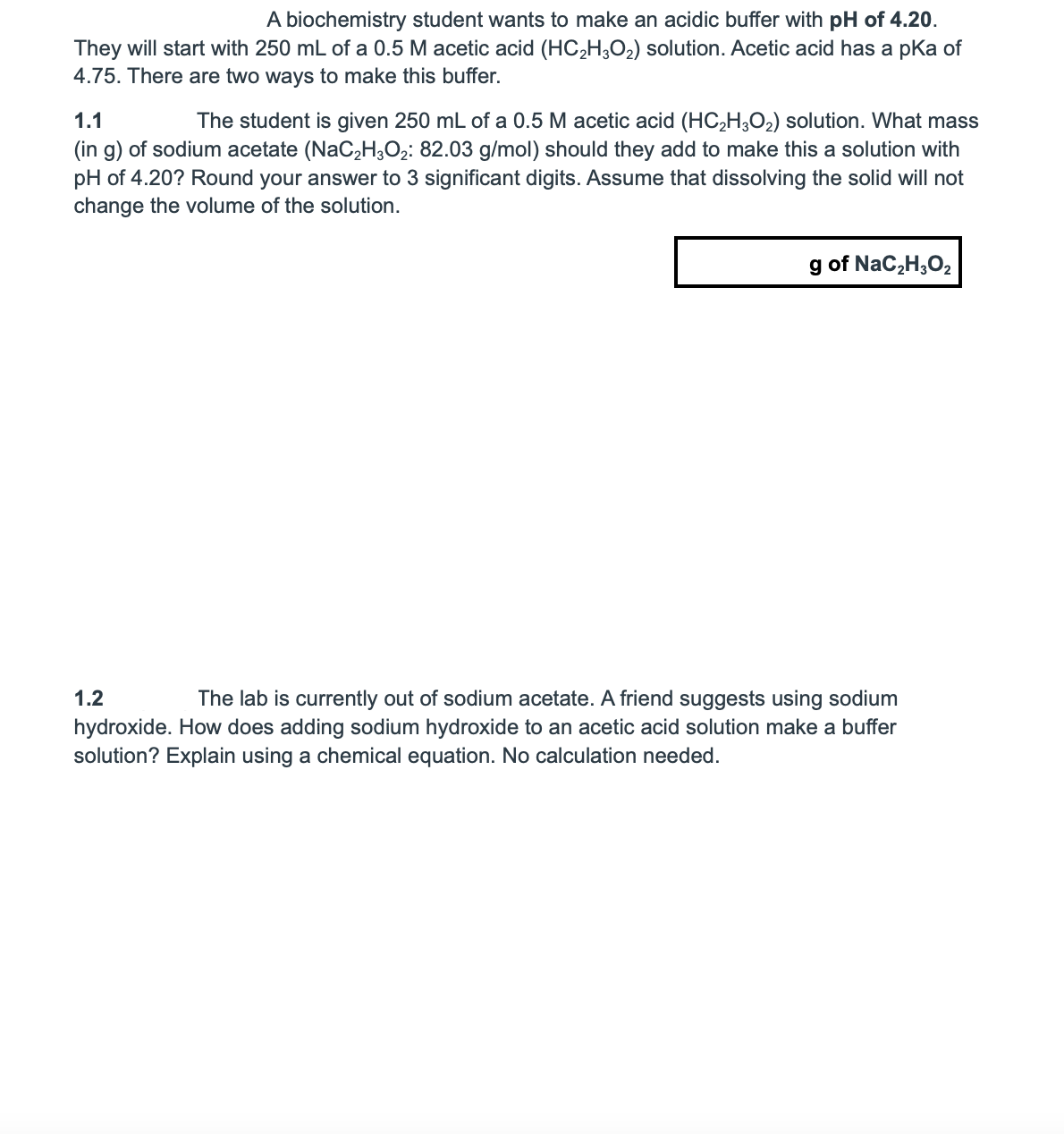A biochemistry student wants to make an acidic buffer with pH of 4.20. They will start with 250 mL of a 0.5 M acetic acid (HC2H3O2) solution. Acetic acid has a pKa of 4.75. There are two ways to make this buffer. 1.1 The student is given 250 mL of a 0.5 M acetic acid (HC2H3O2) solution. What mass (in g) of sodium acetate (NaC,H¿O2: 82.03 g/mol) should they add to make this a solution with pH of 4.20? Round your answer to 3 significant digits. Assume that dissolving the solid will not change the volume of the solution. g of NaC,H;O2 1.2 The lab is currently out of sodium acetate. A friend suggests using sodium hydroxide. How does adding sodium hydroxide to an acetic acid solution make a buffer solution? Explain using a chemical equation. No calculation needed.
Ionic Equilibrium
Chemical equilibrium and ionic equilibrium are two major concepts in chemistry. Ionic equilibrium deals with the equilibrium involved in an ionization process while chemical equilibrium deals with the equilibrium during a chemical change. Ionic equilibrium is established between the ions and unionized species in a system. Understanding the concept of ionic equilibrium is very important to answer the questions related to certain chemical reactions in chemistry.
Arrhenius Acid
Arrhenius acid act as a good electrolyte as it dissociates to its respective ions in the aqueous solutions. Keeping it similar to the general acid properties, Arrhenius acid also neutralizes bases and turns litmus paper into red.
Bronsted Lowry Base In Inorganic Chemistry
Bronsted-Lowry base in inorganic chemistry is any chemical substance that can accept a proton from the other chemical substance it is reacting with.

Trending now
This is a popular solution!
Step by step
Solved in 4 steps









